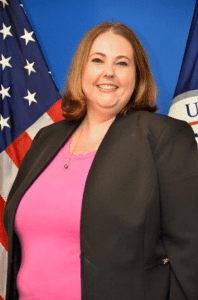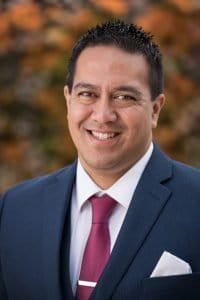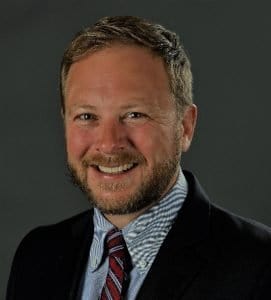How to Build Climate Resilient Infrastructure
December 3, 2020 | Online ::
 The time to invest in resilient infrastructure is now. Opportunities are abundant as the Federal Emergency Management Agency (FEMA) created a new program called Building Resilient Infrastructure and Communities (BRIC) to help capital asset owners take on resiliency projects for climate action.
The time to invest in resilient infrastructure is now. Opportunities are abundant as the Federal Emergency Management Agency (FEMA) created a new program called Building Resilient Infrastructure and Communities (BRIC) to help capital asset owners take on resiliency projects for climate action.
Extreme temperatures, wildfires, superstorms, rising sea levels, and other hazards are only increasing in frequency and severity resulting in trillions of dollars in damages. What are the best design and build strategies for our critical infrastructure? What are the latest innovative technologies to mitigate the adverse effects of climate change?
Attend EUCI’s online event, How to Build Climate Resilient Infrastructure, to hear best practices and lessons learned from government agencies, engineers, contractors, solutions providers, and expert advisors. With Q&A sessions following each presentation, interact with industry leaders who have developed climate resilient capital projects with public and private customers.
Learning Outcomes
This event will provide attendees an opportunity to:
- Identify vulnerabilities and market drivers for climate resilient infrastructure
- Evaluate cutting-edge solutions and design and build strategies
- Gain a better understanding of timelines, costs, and feasibility
- Compare strategies across the public and private sector
- Realize the interdependencies of all infrastructure
- Improve emergency planning
Credits

EUCI is accredited by the International Accreditors for Continuing Education and Training (IACET) and offers IACET CEUs for its learning events that comply with the ANSI/IACET Continuing Education and Training Standard. IACET is recognized internationally as a standard development organization and accrediting body that promotes quality of continuing education and training.
EUCI is authorized by IACET to offer 0.6 CEUs for this event.
Requirements for Successful Completion of Program
Participants must log in and be in attendance for the entirety of the course to be eligible for continuing education credit.
Instructional Methods
PowerPoint presentations will be used in the program.
Who Should Attend
- Federal, state, and municipal agencies
- City planners
- Emergency planners
- Capital asset owners and developers
- Critical infrastructure
- Public and private
- Universities and schools
- Hospitals
- Utilities
- Military installments
- Financial service providers
- Engineering, procurement, and construction companies
- Architects
- Solutions Providers
Thursday, December 3, 2020 : Central Time
8:45 – 9:00 a.m. :: Log In and Welcome
9:00 a.m. – 5:00 p.m. :: Course Timing
12:00 – 12:45 p.m. :: Break for Lunch
Keynote Address 1: Identifying Climate Change Vulnerabilities in Our Infrastructure
In this session, FEMA will discuss climate change vulnerabilities and how stakeholders can leverage grant programs such as the new Building Resilient Infrastructure and Communities (BRIC) grant program in thinking about the importance of improving infrastructure and resilience in communities. Some areas of focus for the keynote are:
- Impacts of extreme temperatures, rising sea levels, super storms, flooding, draughts, wildfires, and other hazards on our existing infrastructure
- Where action is needed most
- Timelines for action
- Possible solutions
Camille Crain, Building Resilient Infrastructure and Communities Section Chief, Hazard Mitigation Assistance Division, FIMA-FEMA
Keynote Address 2: Examining the Intersection of Energy and Environmental Security
Evidence that severe weather and climate impacts pose risks to US national security and global stability has been mounting in recent years. Impacts are seen both from acute events such as hurricanes or heatwaves, and slow onset events with persistent impacts, such as sea level rise or drought.
Providers of essential utilities, such as electricity, water, and gas, are impacted by the same forces driving national security concerns including increased stress on planning, operations, and installations; increased volatility in financial and commodity markets; and increases in the likelihood of crisis events.
Advancing earth system predictability and enhancing partnerships which link science, business execution, and policy are required to quantify and reduce the impacts of environmental risk. Improved environmental predictions and closer partnerships between Federal and private sector contributors are the key to ensuring that predictions and data will seamlessly transform into actionable knowledge, enabling early warnings to be translated into early action.
Mark S. Osler, Senior Advisor for Coastal Inundation and Resilience, National Oceanographic and Atmospheric Administration (NOAA)
Resiliency & Sustainability Planning in New York City
- Update on City’s push toward equitable, resilient deep decarbonization, including the Climate Mobilization Act
- Advancing clean grid, electrification, energy efficiency, low carbon fuels, and how decarbonization efforts will shape new reliability/resiliency needs
- Ensuring resilient energy systems – from bulk supply to distribution to critical end user, with a focus on heat waves and coastal flooding (e.g., vulnerability assessments, infrastructure hardening, changes in capital investments and operations, planning for longer, hotter summers)
- Designing for a climate resilient future – City’s latest climate resilience design guidelines
Ke Wei, Assistant Deputy Director for Infrastructure + Energy, New York City Mayor’s Office of Sustainability & Resiliency
Case Study: Puerto Rico’s Integrated Resource Plan (IRP) for Island Resiliency
Siemens PTI will provide an overview of the studies carried out to support PREPA for the island of Puerto Rico’s Integrated Resource Plan (IRP). The IRP was designed to address multiple objectives, including the need for resiliency as evidenced by the hurricanes Irma and Maria, along with meeting Puerto Rico RPS of 40% by 2025, 60% by 2040, and 100% by 2050. Siemens identified over 100 long term capacity expansion plans (LTCE) during the study representing five core scenarios, three development strategies and multiple sensitivities. All cases resulted in the need for large amounts of storage (e.g. 1,200 MW on a 2,800 MW peak demand system). The best LTCEs were assessed using PSS®E and Aurora (in a Nodal environment). The PSS®E studies identified the need to repurpose some of the retiring generators as synchronous condensers to provide short circuit support and inertia for inverter-based generation. The study also identified the criticality of storage frequency response and the need for a low droop (2% or less). Additionally, the study identified a way in which the electric system could be segregated into mini-grids after a major storm and identified local resources and transmission needed to support each area and return customers to service in the event of a hurricane in a prescribed period.
Dr. Nelson Bacalao, Senior Consulting Manager, Siemens Power Technologies International
12:00 – 12:45 p.m. :: Lunch Break
Coastal Resilience and Nature-Based Solutions
Many grant/funding programs have identified the use of nature-based solutions as a priority (i.e. FEMA BRIC program) to reduce flood impacts and to make a more resilient coastline. This session will explore nature-based solutions as they relate to the reduction of impacts to infrastructure from flood events and how they can improve the overall resilience of coastal properties to flood events. Specific topics related to nature-based solutions include:
-
- What are nature-based solutions?
- What are their benefits?
- What are their limitations?
- How does planning, design, and implementation efforts associated with these features differ from traditional protection strategies?
- In addition to governmental organizations, how does this type of funding apply to private industry and utilities?
Sam Whitin, CERP, Vice President and Coastal Resilience Director, EA Engineering, Science, and Technology, Inc. PBC (EA)
How to Build for Broadband Resilience & Recovery
Broadband infrastructure is critical infrastructure. Broadband resilience is about preventing outages and having systems in place to recover from temporary outages.
- Hardwired connections
- Dig Once Initiative, the move from aerial to underground
- Backup power supplies & internet redundancies
- Mobile broadband backup solutions
- Interdependencies of all infrastructure & broadband
Braddock Cunningham, CEO & Chairman, Broadband Infrastructure Inc
Investing in Reliable Weather Data for Situational Awareness & Critical Decision Making
This presentation will highlight the latest applications in remote sensing for weather data. Learn how emergency planners utilize remote sensing to track and mitigate wildfires, flooding, road weather, and more. Also, see how data analytics help utilities make critical decisions as they prepare for climate change.
Shawn Bethel, Wildfire Mitigation Specialist, Director of Business Development, FTS Inc.
Nanogrids & Microgrids for Emergency Response & Resiliency
The world is experiencing an unprecedented number of emergencies, from the pandemic, to millions of refugees and extreme weather events and wildfires. This session explores how nanogrids and microgrids provide a flexible and resilient solution to these disruptive situations where reliable power is essential to life and safety.
AJ Perkins, President, Instant ON
 Dr. Nelson Bacalao, Senior Consulting Manager, Siemens Power Technologies International
Dr. Nelson Bacalao, Senior Consulting Manager, Siemens Power Technologies International
Dr. Bacalao has over 35 years of extensive experience in providing technical and strategic consulting services to utilities, governments, regulators, independent project developers, and the financial community, in the US and internationally. He combines a rigorous academic training in engineering and business with utility, government and consulting experience in the technical, economic, and regulatory aspects of utility systems. Dr. Bacalao’s core competencies are in the area of transmission planning and Integrated Resource Planning and with emphasis in recent years on the integration of renewable generation. Dr. Bacalao also provides expert testimony in support of regulatory processes and in particular the approval of IRPs by regulatory commissions.
 Shawn Bethel, Wildfire Mitigation Specialist, Director of Business Development, FTS Inc.
Shawn Bethel, Wildfire Mitigation Specialist, Director of Business Development, FTS Inc.
Shawn Bethel is the Director of Business Development at Forest Technology Systems Inc. (FTS) based in Victoria, British Columbia. Started in 1980, FTS is a manufacturer of remote environmental monitoring solutions including systems, instrumentation, software and communications technology to support wildfire management, hydrology and meteorological services industries. The company’s hardware and software technologies comprise the single largest wildfire weather monitoring network in the world. Shawn is helping FTS and its sister companies within the Advanced environmental Monitoring (AEM) group to help support critical decision making in the power utility industry by providing greater field awareness during times of heightened wildfire risk to the transmission and distribution operations and the surrounding communities. Shawn brings his extensive operational wildfire background and experiences to demonstrate the many use case scenarios of technology applications in the wildfire management realms and how many of them can translate into similar value-added benefits to the power utility markets, recognizing that situational awareness is paramount to operational efficiencies and cost savings but most importantly, worker/public safety.
CAREER
During his 20 HIGHLIGHTS: + years in wildfire operations in British Columbia, Shawn worked in many roles from a wildland firefighter rappelling from helicopters, aerial
firefighting tactics, to senior roles on Incident Management Teams and duty officer as a Provincial Wildfire Protection Officer. Shawn served on the wildfire protection leadership team responsible for monitoring wildfire risk in an area approximately twice the size of California State with essential emergency services workload from approximately 2,500 wildfires annually. Shawn was accountable for protecting a wide range of people, property, infrastructures and assets from wildfire across multi-jurisdictional land management authorities involving a complex range of public/private stakeholders.
Using his extensive operational wildfire background combined with 15 years of experience in private sector with wildfire technologies, Shawn is helping FTS to demonstrate the many use case scenarios of predictive services and monitoring technology applications in the wildfire & emergency management realms and how many of them can translate into similar value-added benefits to mitigate risks in a wide range of public/private industry sectors. Shawn recognizes that heightened situational awareness is paramount to operational efficiencies, cost savings in protecting transmission & distribution areas of interest from wildfire but most importantly, worker and public safety.
Shawn received his BBA at Simon Fraser University, British Columbia in 1995. After pursuing pre-law courses at the University of British Columbia, Shawn decided that the wildfire industry was too important to him and chose to follow this passion for working in wildfire management. Shawn worked for the Province of British Columbia in Canada as both a Wildfire Protection Officer and Manager of International Cooperation and Training Projects based out of Victoria, British Columbia, Canada. Shawn understands the importance of reliable data via enabling technologies to understand the workload and the associated organizational response required to mitigate risks, overcome challenges, pursue continuous improvement and maintain long-term successful operations. Shawn joined the FTS team in 2019 and is using his wildfire background and industry knowledge to lead the Business Development activities for FTS, a part of the AEM Group of companies.
 Camille Crain, Building Resilient Infrastructure and Communities Section Chief, Hazard Mitigation Assistance Division, FIMA-FEMA
Camille Crain, Building Resilient Infrastructure and Communities Section Chief, Hazard Mitigation Assistance Division, FIMA-FEMA
Camille Crain is the Building Resilient Infrastructure and Communities (BRIC) Section Chief at FEMA Headquarters. In this role it is her responsibility to design and administer FEMA Hazard Mitigation Assistance’s newest grant program, BRIC.
Camille came to FEMA HQ from FEMA Region 6 where she served as the Hazard Mitigation Assistance Branch Chief in the Mitigation Division. It was her responsibility to manage FEMA’s three HMA grant programs and the HMA staff for the five states and 68 tribes located in Region 6. She administered in excess of $3 billion of mitigation funding.
Camille formerly worked for FEMA Region 4 where she has served as a Senior HMA Program Manager, serving as the Team Lead and Supervisor for the States of Alabama, Georgia and Mississippi. She also was responsible for HMA training needs in the Region, Mitigation Planning coordination with HMA and Standard Operating Procedures development for the HMA Branch. Camille also served as the FEMA Region 4 representative on the Federal Interagency Community Resiliency Workgroup.
Camille was the State Hazard Mitigation Officer for the Commonwealth of Kentucky, where she managed the Commonwealth’s hazard mitigation grant program and planning office and led the effort for the approval of the Kentucky State Enhanced Hazard Mitigation Plan. Camille started her emergency management career at the University of Kentucky, where she was the Commonwealth’s Grants Manager for its Hazard Mitigation Grant Program.
She brings over 20 years’ experience with FEMA’s HMA grant programs at the university, State and Federal level.
Camille holds a Bachelor of Arts in History and a Masters of Public Administration from the University of Kentucky and is a proud member of Big Blue Nation. She loves to travel and all the planning that goes into trips.
 Braddock Cunningham, CEO & Chairman, Broadband Infrastructure Inc
Braddock Cunningham, CEO & Chairman, Broadband Infrastructure Inc
A serial entrepreneur & successful CEO, Braddock has been featured in cover page articles in such publications as Entrepreneur Magazine (April 2004), and the motivational book, “The Momentum Journey”. He has authored articles in regional and international publications and has been a featured speaker at seminars and conferences including Oracle, IBM, and Entrepreneurship, and is a twice nominee for the Ernst and Young Entrepreneur of the Year.
Upon selling his first business to Diversified Computer Consultants in 2000, Braddock founded the supply chain software company, eBridge Technologies, which he grew to include a client-base in more than 70 countries while receiving numerous awards that included a 2003 & 2006 InnoVision Technology Awards. Cunningham sold eBridge to a public logistics company in 2006.
In 2008 he acquired Network Controls and Electric a provider of design, installation, and maintenance of industrial/commercial technology infrastructure. Cunningham grew the company into a leader in the Southeast with four offices across North/South Carolina and grew revenues to record levels over the five years of his leadership. Network Controls was recognized as one of the Top 25 Fastest Growing Companies in South Carolina in 2009, 2010, 2012, and 2013. The company was sold to a private buyer in 2013.
A veteran of the USMC and the SCNG, where he served with distinction, receiving multiple Meritorious Awards. Cunningham serves on several non-profit boards and holds a B.A. from Furman University and an MBA from Clemson University and resides in Simpsonville SC with his wife and two children.
 Mark S. Osler, Senior Advisor for Coastal Inundation and Resilience, National Oceanographic and Atmospheric Administration (NOAA)
Mark S. Osler, Senior Advisor for Coastal Inundation and Resilience, National Oceanographic and Atmospheric Administration (NOAA)
Mark Osler is the Senior Advisor for Coastal Inundation and Resilience for the U.S. National Oceanic and Atmospheric Administration (NOAA). His leadership advances coastal inundation science and the ability of decision makers to prepare for and respond to changes affecting the nation’s coastlines. He serves as senior advisor to NOAA leadership on defining research, applied science, and policy priorities related to understanding and reducing impacts of coastal risk to the public, our national security, and our nation’s economy.
Mark’s inter-agency leadership includes:
- US Government representative to the G7’s Ocean Risk and Resilience Action Alliance
- Co-chair of the Coasts Workgroup within the US Global Change Research Program
- NOAA representative within various White House interagency fora including the National Security Council, Office of Science and Technology Policy, and the Council on Environmental Quality.
Prior to joining NOAA Mark worked for 17 years in the private sector. He holds a bachelor’s degree in civil engineering from Lehigh University and a master’s degree from the University of Delaware’s Center for Applied Coastal Research.
 AJ Perkins, President, Instant ON
AJ Perkins, President, Instant ON
With a background spanning over 25 years of building businesses (on an island in the middle of the Pacific), Mr. Perkins recently took the helm of Instant On (IO), a battery, fuel cell and controls distributor for microgrid solutions after turning DR Microgrid into the number one Microgrid Integrator in CA. He helped DR Microgrid protect homes and businesses from the ongoing public safety power shut-offs by integrating advanced microgrids connected to demand response. Together these companies source technologies and equipment and design, build and commission revenue producing microgrids that allow a home or building to island itself and continue operations in the event of a grid shut down. This microgrid provides energy independence and becomes an asset to the utility company by providing grid support in times of high need by giving them access to clean, predictable power from the microgrid thus providing a revenue to the host customer.
Mr. Perkins is a highly sought-after speaker and has written white papers and op-eds for the industry and is quoted frequently in publications as a Subject Matter Expert. He has spoken recently at the largest solar and energy storage conference in North America, the largest B2B cannabis gathering in the world and in January spoke at the NAHB International Builder’s Show at the Las Vegas Convention Center. He currently sits as an advisor to the California Energy Alliance (CEA) for their Demand Response Task team which works with the California Energy Commission (CEC) to update CA Title 24 policy for 2022.
He has worked with and been recruited by some of the largest energy companies in the U.S. like Lockheed Martin Energy, ENERNOC, C-Power and GI Energy to service commercial and Industrial client’s energy needs.
 Ke Wei, Assistant Deputy Director for Infrastructure + Energy, New York City Mayor’s Office of Sustainability & Resiliency
Ke Wei, Assistant Deputy Director for Infrastructure + Energy, New York City Mayor’s Office of Sustainability & Resiliency
Ke Wei is Assistant Deputy Director for Energy + Infrastructure with the Mayor’s Office of Sustainability and the Office of Resiliency. In this role, she manages policies and programs to advance resilient and equitable deep decarbonization of New York City’s energy systems. Prior to that, she was Program Director at Columbia University’s Center on Global Energy Policy, where she oversaw the fuel resilience program and launched the Center’s Women in Energy Program. She has also worked as an Associate for McKinsey & Company’s New York Office, and as an editor for the Foreign Policy Association. She holds a Masters in International Energy Management and Policy from Columbia and a Bachelor of Arts in International Relations from Pomona College.
 Sam Whitin, CERP, Vice President and Coastal Resilience Director, EA Engineering, Science, and Technology, Inc. PBC (EA)
Sam Whitin, CERP, Vice President and Coastal Resilience Director, EA Engineering, Science, and Technology, Inc. PBC (EA)
Mr. Whitin has over 20 years of experience related to the restoration and protection of coastal resources and is a Certified Ecological Restoration Practitioner (CERP) with the Society of Ecological Restoration. He leads specialized teams of engineers, scientists, and risk evaluators to accomplish projects to improve coastal resiliency and water quality for governmental agencies such as National Marine Fisheries Service, National Park Service, U.S. Air Force, U.S. Fish and Wildlife Service, Natural Resources Conservation Service, as well as a variety of state, private, and non-profit partners.
We will be using Microsoft Teams to facilitate your participation in the upcoming event. You do not need to have an existing Teams account in order to participate in the broadcast – the course will play in your browser and you will have the option of using a microphone to speak with the room and ask questions, or type any questions in via the chat window and our on-site representative will relay your question to the instructor.
- You will receive a meeting invitation will include a link to join the meeting.
- Separate meeting invitations will be sent for the morning and afternoon sessions of the course.
- You will need to join the appropriate meeting at the appropriate time.
- If you are using a microphone, please ensure that it is muted until such time as you need to ask a question.
- The remote meeting connection will be open approximately 30 minutes before the start of the course. We encourage you to connect as early as possible in case you experience any unforeseen problems.
REGISTER NOW FOR THIS EVENT:
How to Build Climate Resilient Infrastructure
December 3, 2020 | Online
| Individual attendee(s) - $ 795.00 each | |
Buy 4 in-person seats and only pay for 3! For this event every fourth in-person attendee is free!
Your registration may be transferred to a member of your organization up to 24 hours in advance of the event. Cancellations must be received on or before October 30, 2020 in order to be refunded and will be subject to a US $195.00 processing fee per registrant. No refunds will be made after this date. Cancellations received after this date will create a credit of the tuition (less processing fee) good toward any other EUCI event. This credit will be good for six months from the cancellation date. In the event of non-attendance, all registration fees will be forfeited. In case of conference cancellation, EUCIs liability is limited to refund of the event registration fee only. For more information regarding administrative policies, such as complaints and refunds, please contact our offices at 303-770-8800
